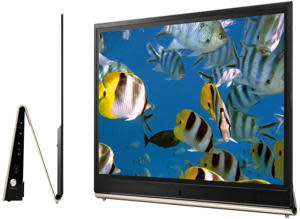How to get the best picture from your HDTV

So you just bought that HDTV you’ve always wanted. It looked great in the store and your anticipation is high. You quickly hook it up and wait anxiously for the screen to come alive in amazing glory.
And then it happens: That “wow” moment you anticipated is shot down by a TV picture that looks good, but not great. Don’t fret. Your TV can look amazing, and you don’t have to pay an expert to come to your house to calibrate it. Well, you can if you want. But wouldn’t you rather save that cash for a Blu-ray player? Of course you would. Here’s how to do it.
1. Slow down
Most people set up new home electronics as soon as possible, availing themselves of the “quick set up” section in the owner’s manual. That will get your device to work, but not to work well. Spend a few minutes with the full owner’s manual and get to know your TV. If you bought a decent model, it likely came loaded with factory settings that will improve your picture immediately. Typically these are named “Dynamic,” “Cinema,” or “Standard.” Spend some time with each setting and see how it suits you. You may want the “Dynamic” or “Vivid” settings for video games while “Standard” is likely appropriate for everyday TV viewing. You can also tweak these factory settings at will.
2. Consider the source.
Despite the graphical prowess of your new TV, a picture is only as good as its source. Standard definition signals may not be improved when running on your HDTV. Often, they look a little worse.
This goes for inputs and cables as well. Your high definition game console, disc player or satellite/cable TV box should be plugged in with HDMI cables. Do not be tricked by fancy, expensive HDMI cables. They all work the same. If your HDTV doesn’t have enough HDMI inputs, you can buy a switcher without losing picture quality.
Finally, the best way to show off your new HDTV is with a Blu-ray player. However, the quality of Blu-ray discs varies greatly. Check reviews online before you buy one.
3. Brightness and Contrast
We’ve come a long way since the days of adjusting the vertical control on a tube TV to get a clear picture. New HDTVs have more settings than most people can understand. Still, you can significantly improve your picture by adjusting two easy settings.
“Brightness” does exactly what it sounds like it does. However, you’re better off thinking of it as a darkness control. In general, people equate a bright picture with a better picture. This is subjective, but not always the case. Try adjusting it so that the blacks are deep while details remain crisp.
“Contrast” is about light adjustment and, like brightness, is typically set too high. Bring it down until you can clearly make out the edges of white objects on the screen.
4. Get serious
If you’ve followed the above steps you should be looking at a fine picture. If you want a great picture, it’s time to get to work. This takes a little more effort and research, but it’s worth it. Cnet.com is an excellent resource for this. On their site, type in the manufacturer and model number of your TV for suggested settings. Not all TVs are included, but this is a good start. You can also purchase specially designed Blu-ray discs that walk you through calibrating your TV’s settings to get the best picture.
5. Did you know?
Correctly calibrating your Plasma TV can reduce the likelihood of screen burn in problems for which those televisions are known. This is less of a problem than it used to be, but it’s still a concern. Another benefit of proper calibration is that it typically results in lowering some settings, such as brightness and contrast, which will reduce the amount of electricity your TV uses.